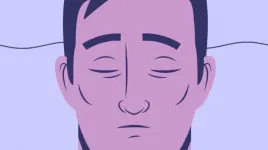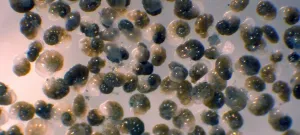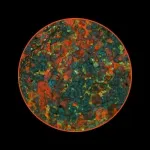When cancer cells "put all their eggs in one basket"
2021-05-27
(Press-News.org) Normal cells usually have multiple solutions for fixing problems. For example, when DNA becomes damaged, healthy white blood cells can use several different strategies to make repairs. But cancer cells may "put all their eggs in one basket," getting rid of all backup plans and depending on just one pathway to mend their DNA. Cold Spring Harbor Laboratory (CSHL) Professor Christopher Vakoc focuses on probing cancers to figure out if they have any unique dependencies. His lab was surprised to discover that a single DNA repair method remained in acute myeloid leukemia (AML), an aggressive cancer that originates in bone marrow. They discovered that if they shut down that pathway in cells grown in the laboratory, they could kill the cancer cells while leaving normal cells unharmed.
Cancer cells may unintentionally remove multiple methods for fixing problems as they change their DNA to grow and spread quickly. But developing a dependency on just one repair pathway means that they have no backup plans if it fails. Vakoc explains:
"Sometimes cancer cells, to become "super cells," they had to get rid of stuff that they thought they didn't need. You get rid of what you don't need, you kind of spring clean maybe a little too much, then you realize: 'Shoot!' You threw away something you actually do need."
In normal cells, a particular type of DNA damage can be solved with two different methods: the ALDH2 gene and the Fanconi anemia (FA) pathway. AML cells have inactivated ALDH2 and are dependent on the FA proteins to perform this DNA repair. The researchers showed that if they shut down the FA pathway, it resulted in cancer cell death.
The team hopes their findings will lead to clinical treatments that eliminate cancer cells without harming other cells in the body. Vakoc says:
"The reality is, there aren't that many differences between cancer cells and normal cells with regard to dependencies. So this is one of the most striking things we've found, which is the kind of win-win for us, to discover a dependency that can be modified with a drug is, we think, the way to make new cancer medicines that are safer and more effective."
INFORMATION:
ELSE PRESS RELEASES FROM THIS DATE:
2021-05-27
New insights into the ability of DNA to overcome harmful genetic changes have been discovered by scientists at the Wellcome Sanger Institute, the University of Lausanne and their collaborators. The team found that 26 per cent of harmful mutations were suppressed by naturally occurring variants in at least one wild yeast strain. In each instance examined in detail, a single 'rescue mutation' was responsible for cancelling out another mutation that would have threatened the organism's survival.
The study, published today (27 May 2021) in Molecular Systems Biology, provides ...
2021-05-27
Millions of surgical procedures performed each year would not be possible without the aid of general anesthesia, the miraculous medical ability to turn off consciousness in a reversible and controllable way.
Researchers are using this powerful tool to better understand how the brain reconstitutes consciousness and cognition after disruptions caused by sleep, medical procedures requiring anesthesia, and neurological dysfunctions such as coma.
In a new study published in the journal eLife, a team led by anesthesiologists George Mashour, M.D., Ph.D. of University of Michigan Medical School, Michigan Medicine, Max Kelz, M.D., Ph.D. of the University of Pennsylvania Medical School, and Michael Avidan, MBBCh ...
2021-05-27
This striking image showcases the unusually contorted appearance of NGC 2276, an appearance caused by two different astrophysical interactions -- one with the superheated gas pervading galaxy clusters, and one with a nearby galactic neighbour.
The interaction of NGC 2276 with the intracluster medium -- the superheated gas lying between the galaxies in galaxy clusters -- has ignited a burst of star formation along one edge of the galaxy. This wave of star formation is visible as the bright, blue-tinged glow of newly formed massive stars towards the left side of this image, and gives the galaxy a strangely lopsided appearance. NGC 2276's recent burst of star formation is also related to the appearance of more exotic inhabitants -- black holes and neutron stars ...
2021-05-27
What does quark-gluon plasma - the hot soup of elementary particles formed a few microseconds after the Big Bang - have in common with tap water? Scientists say it's the way it flows.
A new study, published today in the journal SciPost Physics, has highlighted the surprising similarities between quark-gluon plasma, the first matter thought to have filled the early Universe, and water that comes from our tap.
The ratio between the viscosity of a fluid, the measure of how runny it is, and its density, decides how it flows. Whilst both the viscosity ...
2021-05-27
Woods Hole, Mass. (May 27, 2021) - With the expansion of oxygen-depleted waters in the oceans due to climate change, some species of foraminifera (forams, a type of protist or single-celled eukaryote) that thrive in those conditions could be big winners, biologically speaking.
A new paper that examines two foram species found that they demonstrated great metabolic versatility to flourish in hypoxic and anoxic sediments where there is little or no dissolved oxygen, inferring that the forams' contribution to the marine ecosystem will increase with the expansion of oxygen-depleted habitats.
In addition, the paper ...
2021-05-27
Twenty scientists from 14 countries warn of a hidden "pandemic within the pandemic" in two current publications. On the one hand, physical activity levels have gone down significantly, on the other hand, psychological well-being has suffered. "Governments and those responsible for health systems should take our findings seriously," emphasizes the author team, headed by Dr Jan Wilke from the Institute for Sport Sciences at Goethe University Frankfurt.
About 15,000 people in participating countries answered standardised questionaires as part of an international survey. In April/May 2020, they reported physical activity levels (13,500 participants) as well as their mental and physical well-being (15,000 participants) ...
2021-05-27
With global warming decreasing the size of New Zealand's alpine zone, a University of Otago study found out what this means for our altitude-loving kea.
The study, published in Molecular Ecology, analysed whole genome DNA data of the kea and, for the first time, its forest-adapted sister species, the kākā, to identify genomic differences which cause their habitat specialisations.
The researchers found the kea is not an alpine specialist, but rather one that adapted to using such an open habitat because it was least disturbed by human activity.
Co-author Associate Professor Michael Knapp, of the Department of Anatomy, says that is not likely to surprise people ...
2021-05-27
Different from small molecules, polymer will fold into lamellar crystals during crystallization and further assemble into lamellar stacks.
Synchrotron Small-Angle X-Ray Scattering (SAXS) is an important tool to characterize such nanoscale structure and understand polymer crystallization. However, its scattering mechanism in semi-crystalline polymers is not completely elucidated yet.
Recently, a research group led by Prof. TIAN Xingyou from Institute of Solid State Physics, Hefei Institutes of Physical Science (HFIPS), proposed a complete set of new methods to characterize polymer lamellar crystals ...
2021-05-27
Epithelial ovarian cancer (EOC) is the most common lethal gynaecological cancer. Ovarian cancer is usually treated with platinum-based chemotherapy; however, a significant number of patients are resistant to such treatments and relapse soon afterwards. To improve their survival, there is a need to first identify which patients may be platinum-resistant, so that newer treatments may be administered early.
Now, researchers from the Cancer Science Institute of Singapore (CSI Singapore) at the National University of Singapore (NUS), have discovered a way to predict which patients are resistant to platinum chemotherapy. The study, co-led by CSI Singapore Principal ...
2021-05-27
Current best practices for encouraging more female students to pursue degrees in economics may actually have the opposite effect and worsen gender disparities in the field, a recent study from Oregon State University found.
The study examined whether mass emails telling introductory economic students about promising career and earning opportunities helped increase female participation in higher-level economics courses. But instead, these emails appealed more to male students, increasing male enrollment and widening the existing gender gap. There was no change in the probability of female students majoring in economics.
Researchers say this demonstrates a need for more personalized, deliberate interventions.
"There ...
LAST 30 PRESS RELEASES:
[Press-News.org] When cancer cells "put all their eggs in one basket"




